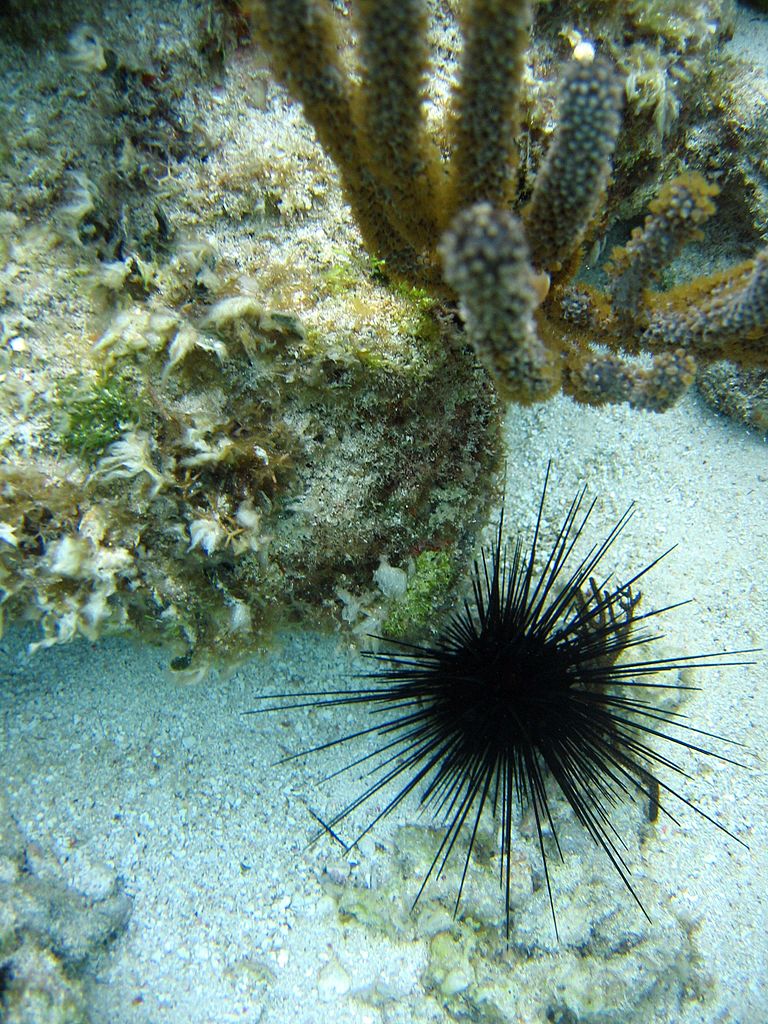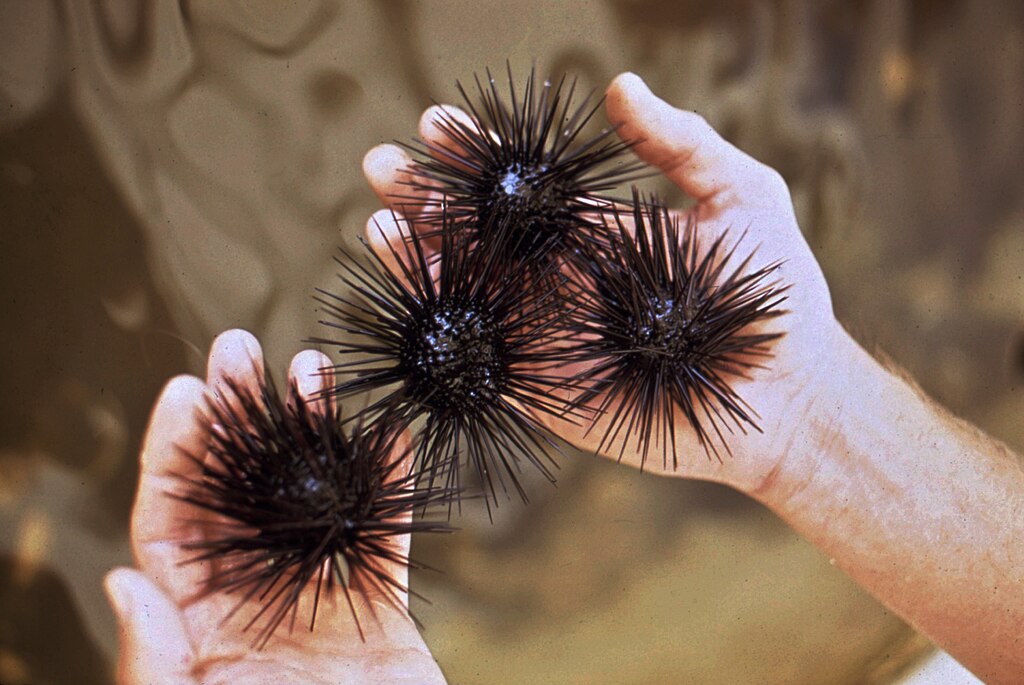Marine scientists from the University of Florida Institute of Food and Agricultural Sciences have been collecting and relocating sea urchins in an effort to aid coral reef restoration. Sea urchins help prevent invasive algae from overgrowing struggling coral reefs so researchers are keen to restock the areas once rich in urchins to help restore the balance and help the native corals long term.
Scientists have tried the tactic before and over a forty-year period, but previously the relocated urchins have either died or moved off within weeks. This time the team collected urchins from a broad area in South Florida. Staff and volunteers gathered the spiny urchins, Diadema spp. and relocated them to the restoration site on Rainbow Reef off Key Biscayne. After three months, more than half the urchins remained, and nearly a quarter remained after nine months – significantly removing harmful algae in the area.

“Once considered a nuisance, these formerly dominant urchins are now one of the most important pieces of the puzzle for restoring reefs, following decades of destruction,” Aaron Pilnick, who led the research for his doctoral dissertation told WQCS News.
“While we need to confirm these results in different regions, we feel optimistic about the potential benefits to Florida’s Coral Reef and the greater Caribbean. The goal is to populate reefs with Diadema and figure out how to get them to stick around long enough to start eating algae.”
The study was conducted by marine scientists from the University of Florida Institute of Food and Agricultural Sciences (UF/IFAS) in Fort Pierce, the University of Miami (UM) Rosenstiel School of Marine, Atmospheric, and Earth Science, and the Phillip and Patricia Frost Museum of Science (Frost Science), which initiated the effort with partial funding provided by the Florida Department of Environmental Protection.
“The survival rate is important because these sea urchins need high densities to successfully breed, which helps reefs thrive,” said Lad Akins, curator of marine conservation at Frost Science.
“We also learned how these urchins were moving around in different habitats, which will help us develop future strategies to get them to stay in place,” said Pilnick, now a researcher at the UF/IFAS School of Forest, Fisheries, and Geomatics Sciences (SFFGS) at the Florida Aquarium Center for Conservation in Apollo Beach.
Sea urchins come up again and again in the news, either for plaguing, uncontrolled, and munching on kelp forests or for their beneficial qualities like their use here to clean up reefs just like we use them for in our tanks. It seems that when it comes to wild urchin populations, the natural balance is key both to them and to many other organisms and ecosystems around them.



